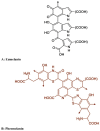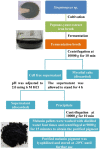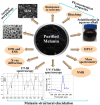Natural Melanin: Current Trends, and Future Approaches, with Especial Reference to Microbial Source
- PMID: 35406213
- PMCID: PMC9002885
- DOI: 10.3390/polym14071339
Natural Melanin: Current Trends, and Future Approaches, with Especial Reference to Microbial Source
Abstract
Melanin is a universal natural dark polymeric pigment, arising in microorganisms, animals, and plants. There is a couple of pieces of literature on melanin, each focusing on a different issue, the goal of the present review is to focus on microbial melanin. It has numerous benefits with very few drawbacks. The current situation and expected trends are discussed. Intriguing, numerous studies have provoked a serious necessity for a comprehensive assessment of microbial melanin pigments. So that, such review would help scholars from diverse backgrounds to realize the importance of melanin pigments isolated from microorganisms, with this aim in mind, information, and hypothesis from this review could be the paradigm for studies on melanin in the next era.
Keywords: artificial intelligence; biosynthesis; detection; fermentation; microbial melanin; optimization; recombinant microbes.
Conflict of interest statement
The authors declare no conflict of interest.
Figures





References
Publication types
LinkOut - more resources
Full Text Sources
Other Literature Sources

